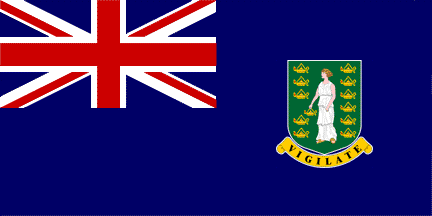Territorial Flag
The British Virgin Islands flag is a famous symbol of British pride. As the British Virgin Islands is the overseas territory of Britain, the Union Jack makes its proud presence in the flag, which has a blue background with the British flag in the left corner and the coat of arms just opposite to it. The coat of arms present on the British Virgin Islands flag has an image of Saint Ursula with twelve lamps surrounding it.
White signifies peace and honesty. Red signifies hardiness, bravery, strength and valour while blue stands for vigilance, truth and loyalty, perseverance & justice.
The flag of the British Virgin Islands was adopted on November 15, 1960 and in 1967 a new constitution allowed a ministerial system of government headed by a Chief Minister. The British Virgin Islands remain under British control.
Flag Etiquette
British Virgin Islands Flag etiquette is very strict and it is essential that Flag protocols and rules are followed correctly.
These include:
- The National flag of British Virgin Islands should never be flown above another national flag on the same staff as this would suggest superiority, or conversely, inferiority of one flag, or Nation, over another.
- The British Virgin Islands flag should never be allowed to drag along the ground.
- National flags should never be flown in a worn or damaged condition. To do so is to show disrespect for the nation.
- A Flag of the British Virgin Islands, when in such condition that it is no longer a fitting emblem of display, should be destroyed in a dignified way, preferably by burning in private with all due care and respect.
- Due care and consideration must be taken to ensure that the British Virgin Islands flag is always flown the correct way up.
- Government and local Authority buildings are encouraged to fly the National Flag.
- The Flag is normally flown from sunrise to sunset every day of the year.

